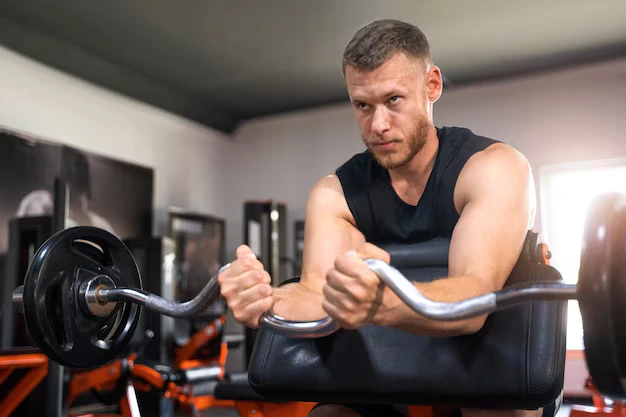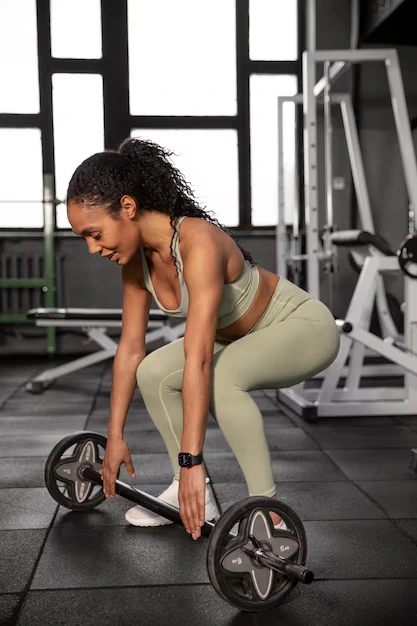When it comes to building upper body strength and muscle mass, few exercises are as iconic as the bicep curl. This fundamental movement targets the biceps, the muscles located on the front of your upper arm. While bicep curls are typically associated with bodybuilding, they also play a crucial role in improving overall arm strength and functional fitness.
In this guide, we’ll dive deep into everything you need to know about bicep curls: the benefits, proper form, common mistakes to avoid, variations, and a few tips on maximizing your results. Whether you’re a beginner or an advanced lifter, understanding the nuances of bicep curls can help you achieve your fitness goals more effectively.
What are Bicep Curls?
A bicep curl is an isolation exercise designed to target the biceps brachii, the main muscle in the front of your upper arm. The exercise involves bending the elbow to lift a weight (dumbbells, barbells, or other equipment) while keeping the upper arm stationary. It’s performed by holding the weight with an underhand grip (palms facing up) and curling the weight toward your shoulder. The movement primarily works the biceps, but can also engage secondary muscles such as the forearms and shoulders.
Primary Muscles Work during bicep curl

The primary muscle worked during bicep curls is the biceps brachii, but other muscles are also engaged as stabilizers:
- Biceps Brachii: The biceps are responsible for elbow flexion, which is the action of bending your arm. The biceps brachii has two heads—long and short—which give the muscle its shape and size.
- Brachialis: Located underneath the biceps, this muscle also contributes to elbow flexion and can help to increase arm size when developed.
- Brachioradialis: This muscle in the forearm assists in the curl movement and helps stabilize the wrist and elbow joints.
While the biceps get the primary focus, the brachialis and brachioradialis also play an essential role in this exercise, making it an effective movement for developing well-rounded arm strength.
Benefits of Bicep Curls
Bicep curls are a simple yet highly effective exercise with numerous benefits that go beyond building bigger arms. Let’s look at some of the key advantages of incorporating bicep curls into your workout routine.
1. Builds Arm Strength and Size
The most obvious benefit of bicep curls is the development of strength and muscle mass in the arms. With consistent training, you can increase your bicep strength and add definition to your upper arms. For bodybuilders, the biceps are an important muscle group for achieving an aesthetically pleasing physique, and curls are one of the best exercises to isolate and target this muscle.
2. Improves Functional Strength
While bicep curls are an isolation exercise, they also contribute to improving functional strength. Biceps play an important role in many day-to-day tasks, including lifting, pulling, and carrying. Stronger biceps will help you perform daily activities, such as lifting groceries or carrying heavy items, with greater ease and less strain on your muscles and joints.
3. Enhances Grip Strength
Since bicep curls involve holding a weight, they help to improve grip strength as well. This benefit carries over into other exercises, such as deadlifts or pull-ups, where a strong grip is essential. By improving grip strength, you’ll be able to lift heavier weights and perform better in other exercises and sports.
4. Balances Muscle Development
In many training programs, compound exercises like push-ups, bench presses, and rows are emphasized. While these exercises target larger muscle groups such as the chest, back, and shoulders, they often leave the arms underdeveloped. Bicep curls help to balance out muscle development by specifically targeting the arms, ensuring that you don’t neglect this important muscle group.
5. Versatility and Accessibility
One of the main reasons bicep curls are so popular is their accessibility. You can perform this exercise with a variety of equipment, including dumbbells, barbells, resistance bands, or even cable machines. Bicep curls are also incredibly versatile, allowing you to perform them standing, seated, or on an incline bench for different variations and angles.
Proper Form for Bicep Curls
The key to maximizing the effectiveness of bicep curls is maintaining proper form throughout the movement. Poor technique can lead to muscle imbalances, wasted effort, and even injury. Here’s a step-by-step guide to performing a basic dumbbell bicep curl:
1. Starting Position
- Stand on feet keep your shoulder-width apart, slightly bend your knees for stability.
- Hold a dumbbell in each hand with an underhand grip (palms facing forward).
- Keep your arms fully extended and your elbows close to your torso.
2. Curl the Weights Up
- Exhale as you curl the weights toward your shoulders. Focus on using your biceps to lift the weight, and avoid using momentum or swinging your body.
- Keep your upper arms fixed and tight against your body throughout the movement.
- Continue curling the weights until your forearms are nearly vertical to the floor and the dumbbells are just below your shoulders.
3. Lower the Weights Slowly
- Take a deep breath as you gently lower the dumbbells back to the starting position, maintaining control and preventing them from falling too fast.
- Resist the urge to let gravity do the work—slow, controlled movements are crucial for maximizing muscle engagement.
4. Repeat
- Perform the desired number of repetitions, focusing on form and control with every rep.
Common Mistakes to Avoid in Bicep Curls

To get the most out of your bicep curls, it’s important to be aware of some common mistakes and how to correct them.
1. Elbows Flaring Out
Allowing your elbows to flare out during the curl shifts the emphasis from the biceps to other muscles, such as the shoulders. To fix this, keep your elbows locked in place at your sides and focus on curling the weights using your biceps.
2. Using Momentum or Swinging Weights
Many lifters make the mistake of using their back or legs to swing the weights up, especially when trying to lift heavier weights. This compromises the efficiency of the exercise and raises the likelihood of injury. Always use a slow, controlled motion and avoid jerking or swinging.
3. Not Fully Extending the Arms
Failing to fully extend your arms at the bottom of the movement reduces the time your biceps spend under tension. Ensure that you fully extend your arms and control the weight as it lowers.
4. Lifting Too Heavy
While it can be tempting to go for heavier weights, lifting too much can compromise your form and increase the risk of injury. Start with a moderate weight and focus on perfecting your form before progressively increasing the load.
5. Neglecting Other Muscles
While bicep curls are great for isolating the biceps, it’s important to train other muscle groups as well. Incorporate exercises like triceps pushdowns, pull-ups, and rows to create a well-balanced upper body workout.
Variations of Bicep Curls
To keep your workouts interesting and challenging, you can try different bicep curl variations. Each variation targets the muscles slightly differently, helping to develop strength and size in all areas of your arms.
1. Hammer Curls
The hammer curl is a variation where you hold the dumbbells with a neutral grip (palms facing each other). This variation targets the brachialis and brachioradialis muscles in addition to the biceps, providing a more complete arm workout.
2. Barbell Curls
Using a barbell for bicep curls allows you to lift heavier weights, making this variation great for strength training. Just like dumbbell curls, focus on form and avoid swinging the barbell.
3. Concentration Curls
For a more focused contraction, try concentration curls. This exercise is performed by sitting down and curling a dumbbell with one arm at a time. By bracing your elbow against your thigh, you can isolate the biceps and ensure full muscle engagement.
4. Cable Curls
Cable curls are performed using a cable machine and allow for constant tension throughout the entire movement. This variation can be great for targeting different parts of the biceps, especially when using attachments like a rope or straight bar.
5. Incline Dumbbell Curls
Performing curls on an incline bench stretches the biceps more at the bottom of the movement and provides a unique angle of resistance. This variation helps target the long head of the biceps, leading to better muscle development.
Tips for Maximizing Bicep Curl Results
- Progressive Overload: Gradually increase the weight you lift over time to continually challenge your muscles and promote growth.
- Mind-Muscle Connection: Focus on feeling the biceps working throughout the movement. A strong mind-muscle connection ensures proper engagement and maximizes results.
- Proper Nutrition: To build muscle, ensure you’re consuming enough protein and maintaining a caloric surplus if you’re looking to gain muscle mass.
Allow adequate time for your muscles to recover between workouts. Overtraining can hinder muscle growth and lead to injury.
Conclusion
Bicep curls are an essential exercise for anyone looking to improve arm strength, increase muscle mass, and enhance overall fitness. By performing the exercise with proper form, avoiding common mistakes, and incorporating variations into your routine, you can maximize your results and achieve impressive arm development.
Whether you’re new to strength training or an experienced lifter, bicep curls should be a staple in your workout program. Remember to focus on controlled movements, progressively increase weight, and prioritize muscle engagement for the best results. Happy lifting!
